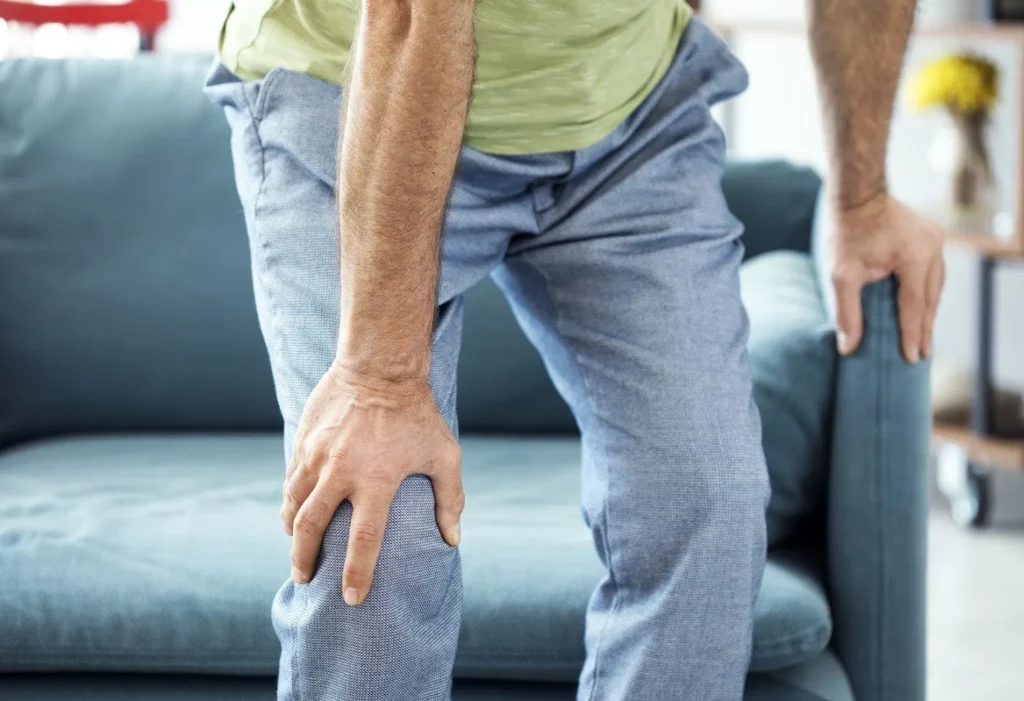Excellence in Rheumatology Care since 1977. Accepting New Patients
Dec 17, 2018
Gout is actually a type of arthritis, and it can affect many joints, causing mild to severe pain. Like other forms of arthritis, there is no cure for the condition, but there are ways you can reduce your risk of developing flare-ups of gout. If you want to avoid the discomfort associated with gout, learn more about the causes and treatments.
What Causes Gout?
Usually, the pain, stiffness and other symptoms of arthritis are caused by inflammation from wear and tear, damage, etc. However, gout is caused by uric acid in the bloodstream. Uric acid gathers around the joint, creating sharp crystals which irritate the joint. It is most common on the big toe, but you may also develop gout in the foot, hand, wrist, ankle, knee, or elbow.
Regardless of the location, gout can cause severe joint pain, and unlike other forms of arthritis, it can come on suddenly and without warning. The area may also look swollen or red, and you may not be able to move the toe much without pain.
Who’s at Higher Risk for Getting Gout?
Anyone can get gout, but there are a few risk factors that may make you more prone to the disease. First, if you have a family history of gout or you have certain chronic, untreated diseases (diabetes, high blood pressure, etc.), you are more likely to have higher levels of uric acid in your body. Trauma or surgery may also increase your risk.
Gout is more common in men. In fact, for every one woman with gout, there are three men with the same condition. If a woman does develop gout, it is usually after menopause because the body naturally begins to develop more uric acid at that time. If you are overweight, drink a lot of alcohol, or consume large amounts of sugar, you are at a higher risk for gout.
How Can You Prevent Gout?
The best way to prevent gout is with diet and exercise. By following a healthy diet and staying active, you should avoid some risk factors, such as obesity, high cholesterol, and heart disease. However, eating healthy also means avoiding foods high in purines, which turn into uric acid in your body. Foods high in purines include alcoholic beverages, seafood (codfish, mussels, scallops, haddock, lobster, crab, and shrimp) and meats (beef, chicken, pork, and organ meats).
If you already have gout, you want to avoid flare-ups, which can happen when the joint collects a lot of uric acid crystals. Whenever possible, avoid foods with high to moderate levels of purines and stay hydrated to help your kidneys flush the uric acid. If you do experience a flare, try to avoid putting too much pressure on the joint.
What Treatments Are Available?
If you suspect you have gout, your doctor can easily run a few tests, including joint fluid tests, blood tests, X-rays, and ultrasounds. The main treatment is home care to prevent flare-ups, but if you avoid purine-rich foods and you still experience a lot of pain, your doctor may prescribe medications. For mild pain, over-the-counter pain medication may suffice, but if the problem is more serious, your doctor may prescribe a stronger pain medication, like colchicine or corticosteroids.
If you have routine attacks, you may need special medication to help reduce the amount of uric acid in your body. Some medications (xanthine oxidase inhibitors) limit the amount of uric acid your body makes, but others (uricosurics) help your body naturally remove the uric acid.
Gout can cause extreme pain and drastically limit movement. With good diet and exercise, you can reduce your risk of gout. If you believe you may have gout or if your attacks are getting worse despite lifestyle changes, contact usat Sarasota Arthritis Center today.

3 Fundamental Points for Understanding Bursitis
If you have swollen and painful joints, you could be suffering from bursitis. This condition occurs when bursa sacs become inflamed.

Eating for Your Arthritis: What You Should Know
When you struggle with arthritis joint inflammation, pain, and stiffness, you may wonder what you can possibly do to improve the situation.

How Exercise Benefits Rheumatoid Arthritis Patients
While rheumatoid arthritis, or RA, makes your joints feel painful and stiff, you may find relief with exercise. However, plan your exercise carefully based on your condition.



We are able to see patients by appointment only. If you need to cancel an appointment, please contact our office at least 24 hours in advance. To expedite the check-in process prior to your appointment, please complete the pre-registration paperwork that will be emailed and texted to you through Phreesia. Please bring your insurance cards, method of payment, and identification with you to every appointment.